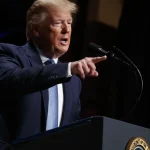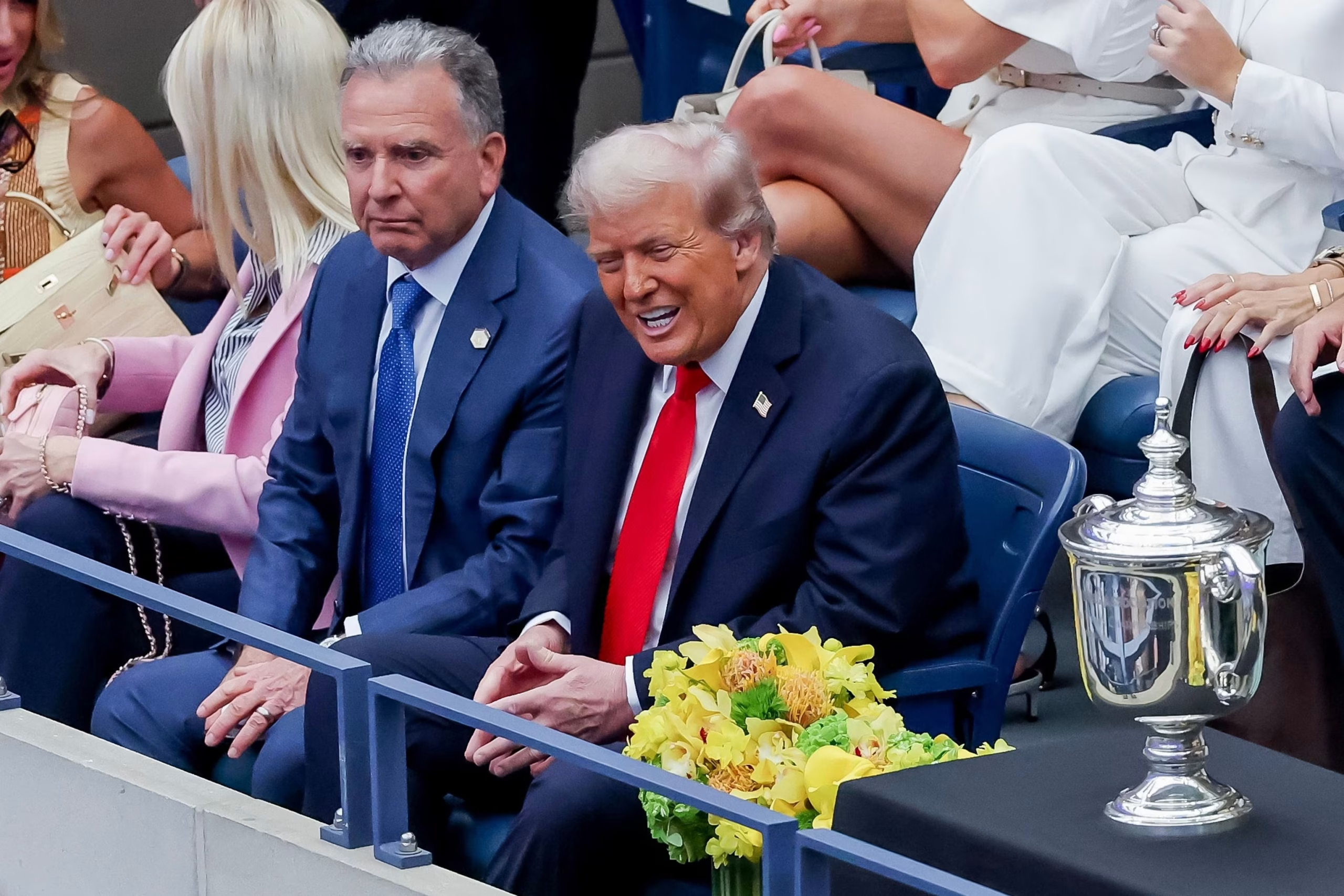In a move that has reignited one of the most contentious debates in American education and politics, former President Donald Trump has announced that the U.S. Department of Education will issue new guidance on prayer in public schools. The decision reflects Trump’s continued alignment with conservative values and his effort to appeal to voters who prioritize religious freedom as a cornerstone of American democracy. At its heart, the announcement touches on deeply rooted questions about the First Amendment, the separation of church and state, and the rights of students in classrooms across the country. Supporters see it as a long-overdue reaffirmation of religious expression, while critics warn that it could blur constitutional boundaries and marginalize students of minority faiths. This article explores the history, implications, and future of this decision, while also examining how it could reshape the broader debate on religion in America’s schools.
- The Historical Context of Prayer in Public Schools
- Trump’s Announcement and Its Political Undertones
- What the Education Department Guidance Will Likely Include
- Supporters’ Perspective: A Win for Religious Freedom
- Critics’ Concerns: The Risk of Blurring Church and State
- Legal Challenges and the Courts’ Role
- The Broader Cultural Impact
- International Comparisons: How Other Countries Handle School Prayer
- What This Means for Students, Parents, and Teachers
- FAQs
- Conclusion
The Historical Context of Prayer in Public Schools
The issue of prayer in public schools is not new; in fact, it has been a flashpoint in American society for decades. The landmark 1962 Supreme Court case Engel v. Vitale marked a turning point when the Court ruled that school-sponsored prayer was unconstitutional under the Establishment Clause of the First Amendment. That decision did not ban individual prayer but made clear that public schools could not endorse or lead students in religious exercises. The ruling was followed by several other cases that further defined the boundaries, including Abington School District v. Schempp in 1963, which struck down mandatory Bible readings in public schools.
For many conservative Christians, these decisions symbolized what they saw as a drift away from America’s moral foundation. Over the decades, political leaders have promised to restore what they believe are the rightful religious freedoms of students, often using the issue as a rallying cry in elections. Trump’s new guidance seeks to clarify what students can and cannot do when it comes to prayer, signaling an attempt to reassert the place of faith in public education.
Trump’s Announcement and Its Political Undertones
Trump’s announcement came with the characteristic flair that has defined much of his political career. He framed the issue as one of religious liberty, portraying students who wish to pray in schools as being unfairly silenced. “No American child should be punished for expressing their faith,” Trump said, promising that his administration would ensure schools do not discourage voluntary prayer.
Politically, the timing is significant. Religion and education remain hot-button issues among his voter base, particularly evangelical Christians, who were central to his previous election victories. By pushing the Education Department to release new guidance, Trump positions himself as the defender of religious expression, contrasting himself with those who argue for a stricter separation of church and state. Analysts suggest that this move is not only about policy but also about energizing his supporters and shaping the narrative heading into future elections.
What the Education Department Guidance Will Likely Include
While the full details of the new guidance are not yet public, early indications suggest it will reinforce existing laws that protect voluntary religious expression by students. Currently, federal law already requires states and schools receiving federal funds to certify that they do not prevent constitutionally protected prayer. The updated guidance may go further by clarifying what counts as permissible prayer activities, outlining how schools should handle student-led groups, and reminding administrators that they cannot discriminate against students for their religious practices.
For example, students are generally allowed to pray privately, form religious clubs, or read scriptures during free periods, as long as they do not disrupt instruction or coerce others into participation. Teachers, however, as government employees, are more restricted in leading or endorsing prayer during class. The challenge will be how this guidance interprets those boundaries and whether it emboldens certain schools to push the limits of what courts have previously allowed.
Supporters’ Perspective: A Win for Religious Freedom
Supporters of Trump’s decision argue that students have long faced unnecessary restrictions or even punishments for expressing their faith. Organizations like the First Liberty Institute, a legal group that defends religious freedom cases, have documented incidents where students were told they could not pray over their meals or gather for Bible study on school grounds. To them, the new guidance represents a necessary correction that empowers students to live out their beliefs without fear.
“Religious freedom doesn’t end at the schoolhouse gate,” said Kelly Shackelford, president of First Liberty Institute. “Students should not be treated as second-class citizens when it comes to their right to pray.” Many parents also see it as a way of reaffirming moral values in schools, especially in an era when cultural divisions feel sharper than ever. For these advocates, Trump’s guidance is not only constitutional but also culturally necessary to preserve what they view as America’s religious heritage.
Critics’ Concerns: The Risk of Blurring Church and State
Critics, however, see the move as a potential threat to the principle of church-state separation. Civil liberties organizations such as the American Civil Liberties Union (ACLU) warn that new guidance could embolden schools to allow or even encourage religious activities in ways that pressure non-Christian students to participate. They argue that even “voluntary” prayer in public schools can create a coercive environment, especially for young children who may feel excluded or ostracized if they do not join.
Rachel Laser, president of Americans United for Separation of Church and State, has warned that “students should never be made to feel like outsiders in their own public schools because of their faith or lack of faith.” Critics believe the guidance may invite lawsuits, especially if schools interpret it as a green light for teachers or administrators to blur the lines of neutrality. In their view, the announcement is less about protecting rights and more about politicizing religion for electoral gain.
Legal Challenges and the Courts’ Role
Any guidance issued by the Education Department will almost certainly face legal challenges. Courts have long held a delicate balance between protecting individual religious expression and preventing state endorsement of religion. The Supreme Court’s recent rulings suggest a shift toward greater accommodation of religion in public life, as seen in the 2022 case Kennedy v. Bremerton School District, where the Court sided with a high school football coach who prayed on the field after games.
This precedent could embolden the Trump administration’s efforts, but it also raises questions about how far public schools can go before crossing constitutional boundaries. If new disputes emerge, the courts will again play a decisive role in defining the limits of prayer in education. With a conservative-leaning Supreme Court, many legal experts predict that the balance may tilt more favorably toward religious expression than in past decades.
The Broader Cultural Impact
Beyond the legal debates, Trump’s announcement highlights the broader cultural struggle over religion’s role in public life. For many Americans, faith is not merely a private matter but a public expression that they believe should be welcomed in shared spaces like schools. For others, public schools should remain neutral spaces where children of all backgrounds feel included, regardless of religion.
Surveys show a divided public on the issue. A Pew Research Center study found that while 60 percent of Americans believe religion is losing influence in society, only about 35 percent support allowing teachers to lead prayers in public schools. These numbers illustrate the complexity of the debate, with Americans often supporting individual freedom while resisting institutional promotion of faith.
International Comparisons: How Other Countries Handle School Prayer
Looking beyond the United States, it is clear that school prayer policies vary widely. In some countries, such as the United Kingdom, schools are legally required to hold daily acts of worship, though they are often broadly interpreted and inclusive of multiple faiths. In contrast, secular countries like France strictly prohibit religious expression in public schools, reflecting their commitment to laïcité, or strict secularism.
The American model has always been unique, balancing a constitutional commitment to both free exercise of religion and non-establishment. Trump’s announcement underscores how fragile and contested that balance remains, particularly in a nation as religiously diverse as the United States.
What This Means for Students, Parents, and Teachers
For students, the new guidance may embolden those who wish to express their faith openly, whether by praying before exams, starting a religious club, or reading religious texts during free time. For parents, it offers reassurance that their children’s rights will not be curtailed by overly cautious school administrators. Teachers, however, will need to tread carefully, as they remain restricted by the Establishment Clause from promoting religion in their official capacity.
School districts may also face new challenges in training staff and preventing conflicts between students of different faiths. In diverse communities, the potential for division could increase if students feel pressured to conform. Administrators will likely need clear policies and sensitivity training to navigate this evolving landscape.
FAQs
What does Trump’s announcement on prayer in public schools mean?
It means that the Education Department will issue updated guidance clarifying students’ rights to voluntary prayer and religious expression in public schools. This is intended to reinforce existing laws while potentially expanding protections.
Does this mean teachers can lead prayer in class?
No. Teachers, as government employees, are prohibited from leading or endorsing prayer in their official role. The guidance is expected to focus on student-led, voluntary activities rather than teacher-led ones.
Can students of all faiths participate in school prayer?
Yes. The guidance applies to students of all religious backgrounds, as well as those who may wish to express non-religious beliefs. However, critics argue that in practice, minority faiths may still feel excluded or pressured.
Will this lead to lawsuits?
Most likely. Because the boundaries of prayer in schools are hotly debated, any new policy or guidance is likely to spark legal challenges that could end up in federal courts.
How does this compare to past administrations?
While past administrations have also issued guidance on school prayer, Trump’s announcement places a stronger emphasis on protecting religious expression, appealing particularly to his conservative base.
Conclusion
Trump’s announcement that the Education Department will issue guidance on prayer in public schools represents both a policy shift and a cultural statement. It reignites a decades-long debate about the role of religion in education and the meaning of the First Amendment in modern America. For supporters, it is a victory for religious liberty and a defense of students’ rights to express their faith. For critics, it risks eroding the constitutional separation of church and state and marginalizing those from different religious traditions. What is certain is that the guidance will spark legal, political, and cultural battles that go far beyond the classroom. As America continues to wrestle with questions of identity, freedom, and inclusion, the debate over school prayer remains a powerful symbol of the nation’s ongoing struggle to balance faith and freedom in a pluralistic society.










